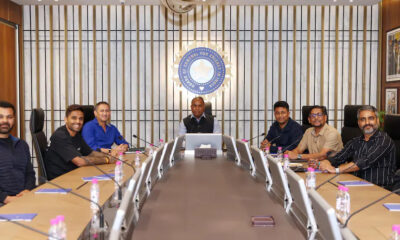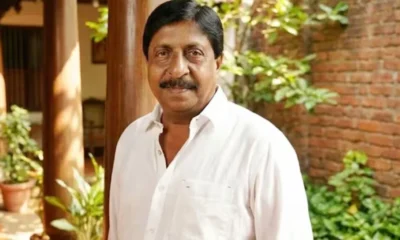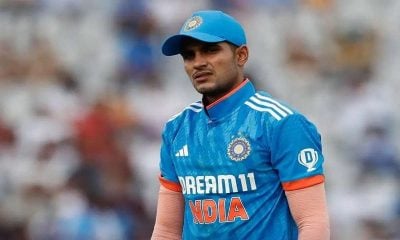India News
CBI Director Verma’s ouster, unanswered questions, Kharge’s note, Rafale and other cases on CBI Director’s table for probe
Published
7 years agoon
By

[vc_row][vc_column][vc_column_text]While Narendra Modi government and BJP exult over the vindication of their stand with the Select Committee removing Alok Verma from the post of CBI director, many issues that came to light during the whole affair beg for attention – and answers.
These include:
– points raised by Congress Mallikarjun Kharge, the lone dissenting voice in the high-powered selection committee that decided to oust CBI Director Alok Verma – especially the sequence of events leading to government order divesting Verma of his powers,
– the cases, including Rafale deal, with CBI Director’s office for a decision on probe
– the serious issues involving persons in high offices raised by senior CBI officer Manish Kumar Sinha in his petition to Supreme Court after he was transferred by interim Director M Nageswar Rao
Points raised by Kharge
A note that Kharge went for Thursday’s meeting with questioned the findings of the Central Vigilance Commission (CVC) report against Verma and arguing why he should be restored with “full extent and authority of powers” under his office.
In the note, Kharge also demanded that Verma be allowed to continue as CBI Director for an additional period of 77 days to make up for the days lost when he was sent on leave.
Kharge’s note included a purported sequence of events that, he alleged, showed how the Prime Minister’s Office and the National Security Advisor played a role in the events that took place between 8 pm on October 23 and the early hours of October 24, 2018, during which Verma was divested of his powers and M Nageswara Rao asked to charge as interim chief.
The Congress leader demanded an investigation into the sequence of events and expressed the fear that there was a “conspiracy at the highest levels of the Government with statutory authorities being found complicit” which appears to be part of a “pre-meditated decision” to remove Verma “with reasons and processes being manufactured as an afterthought.”
Kharge’s note states: “Having examined the contents of the CVC report, it is my considered opinion that Alok Verma be allowed to explain himself before this Committee, along with the charges made against him, prior to any decision being taken.”
However, Kharge’s note includes a summary of the CVC’s charges and findings against shows that while six out of the ten allegations in the CVC report against Verma are “unsubstantiated/false”, four were found to be “prima facie substantiated and on the basis of circumstantial evidence,a found to be unflattering to Alok Verma”.
In the summary of the CVC’s charges and findings in Kharge’s note, the four cases “found to be unflattering” to Verma include: “exclusion of a suspect from being named as accused in an FIR – IRCTC case”; “inordinate delay in finalizing investigation report in bank fraud case against main accused, indicating favouritism towards the main accused”; “failure to take action in gold smuggling case at IGI Airport”; “attempts to induct tainted officers into CBI”.
However, the note also states: “In the four cases where the CVC returns unflattering conclusions, even they admit that there is no proof of any monetary benefit, no unimpeachable witnesses corroborating the story and the conclusion is arrived at on the basis of circumstantial evidence.”
Kharge’s note states that the other allegations were either not substantiated or needed further investigation: “tried to call off searches/raids in Patna” (IRCTC case); “influencing investigation by taking bribe”; “transfer of FIR related to Joint Director of the CBI”; “not taking action on certain intelligence inputs”; “illegal gratification in ongoing preliminary enquiry against land acquisition in Haryana”; “helping cattle smugglers as commandant of BSF”; “undue interference in CBI cases against ED officials”.
The note states: “While of course these allegations should be investigated further, as the CVC itself has stated, to suggest that these are on par with the very serious allegations levelled against Rakesh Asthana, for example, is incorrect. Furthermore, as the Supreme Court has itself held, mere allegations or circumstantial evidence cannot be the basis for finding a person guilty.”
Kharge points to sequence of events, alleging “conspiracy at the highest levels of the Government”
Kharge claimed that the sequence of events showed that the PMO and the National Security Advisor had a role in the events that took place between 8.30 pm on October 23 and early hours of October 24, 2018.
He claimed that the sequence of events showed that the PMO and the National Security Advisor had a role in the events that took place between 8.30 pm on October 23 and early hours of October 24, 2018, during which Verma was divested of his responsibility and M Nageswara Rao took charge as interim chief.
Also Read: Delhi High Court rejects CBI Spl Director Rakesh Asthana’s plea for quashing cases
Kharge claimed in the note that there was a “conspiracy at the highest levels of the Government with statutory authorities being found complicit”, which appears to be part of a “pre-meditated decision” to remove Verma “with reasons and processes being manufactured as an afterthought.”
The sequence of events in Kharge’s note:
* CVC KV Chowdary cancels his foreign tour “abruptly and pre-emptively” and holds a meeting of the CVC at night.
* At around 11 pm on October 23, Joint Director M Nageswara Rao sent to the CBI Headquarters in “anticipation of the CVC order”.
* At around 11.30 pm, the Delhi Police Commissioner calls his subordinates to Khan Market and “alerts them about a potential midnight operation”.
* At around 12 am, Delhi Police chief “supposedly receives instructions from NSA to take over the CBI Headquarters.”
* CISF officials attempt to prevent them from entering the CBI Headquarters, but they were “instructed ostensibly at the behest of the PMO/ NSA to stand down.”
* Between 8 pm and 12.30 am, CVC issues the order for removal of Verma as Director.
* Between 12.30 am and 1 am, the CVC order is rushed to DoPT Secretary, “who for some strange reason, continues to be in his office post-midnight.”
* DoPT Secretary then rushes to PMO, where the Cabinet Committee on Appointments, headed by the Prime Minister, is waiting to give approval to the CVC order.
* The DoPT order is then issued, removing Verma as the CBI Director.
* “Around 2.30 am (October 24, 2018) reportedly (and to be verified), the Central Vigilance Commissioner and Additional Secretary, DoPT, Lok Ranjan, then visit the CBI Headquarters and come out along with Joint Director Rao, with some files and records.”
Rafale and other cases pending decision when Verma was removed:
As opposition pointed to “undue haste” of government in removing Verma and accused it of being afraid of a probe in cases, with Congress president Rahul Gandhi specifically mentioning Rafale deal as the reason, a report in The Indian Express (IE) listed the cases that were on CBI director’s table for investigation.
These ranged from a Rafale deal complaint to the Medical Council of India bribery case, from a probe into a coal mine allocation case allegedly involving IAS officer Bhaskar Khulbe to an investigation into the Sterling Biotech case in which Special Director Rakesh Asthana’s alleged role was being probed.
These were among the works-in-progress files on CBI Director Alok Verma’s table when he was suddenly sent on leave Wednesday, said the IE report.
In his petition to the Supreme Court, Verma, while underlining that “there are bound to be occasions when certain investigations into high functionaries do not take the direction that may be desirable to the Government”, said “decisions that were crucial to the progress of certain investigations were stymied by Mr Asthana alone”.
He did not mention the cases in his petition, saying they were “extremely sensitive” and that he “shall however furnish the same” to the court.
The IE said that some of the unfinished work on Alok Verma’s table included:
* A complaint against alleged irregularities in the Rafale fighter deal with France: The verification process of the complaint was on in the agency and, sources said, “a decision was to be taken”. The 132-page complaint was received by Verma on October 4, and had been filed by former Union Ministers Yashwant Sinha and Arun Shourie and lawyer Prashant Bhushan.
* The CBI has been probing the role of highly-placed individuals in the Medical Council of India (MCI) bribery case, which implicated retired High Court judge IM Quddusi. The chargesheet against Quddusi, sources said, had been prepared and was ready for Verma’s signature.
* The case of Justice SN Shukla of Allahabad High Court, who was sent on leave following allegations of corruption in medical admissions, had been identified as fit for investigation. Sources said a PE had been prepared and was awaiting Verma’s signature.
* Another case being looked at by the CBI was BJP MP Subramanian Swamy’s letters to the CBI, complaining against Finance and Revenue Secretary Hasmukh Adhia.
* The alleged role of IAS officer Bhaskar Khulbe, Secretary to the Prime Minister, is being investigated by the CBI in a case of allocation of coal mines.
* In another case, a Delhi-based middleman was raided in the first week of October. An alleged pay-off list and Rs 3 crore in cash were found and the CBI was told he had a role in bribing politicians and officials for “senior Public Sector Unit appointments”.
* The CBI probe into Sandesara and the Sterling Biotech case was nearing completion, and the alleged role of Asthana was being investigated.
Questions/issues relating to persons in high offices
If sequence of events in Kharge’s note and the cases on CBI director’s table pending a decision for probe raise questions, there are even more serious issues that cry out for attention. These were raised by a decorated officer of the CBI in a petition to the Supreme Court, urging for a hearing in connection with then CBI Director Alok Verma’s plea challenging Modi government’s order divesting him of his powers.
CBI DIG Manish Kumar Sinha, who was shunted out to Nagpur by the acting CBI director on October 24, in his petition seeking to intervene in the case filed by CBI director Alok Verma. Sinha, said his transfer was “arbitrary, motivated and mala fide, and was made solely with the purpose and intent to victimise the officer as the investigation revealed cogent evidence against certain powerful persons.”
The intervention application mentions the Prime Minister’s Office, the national security adviser, the central vigilance commissioner, a Union minister, the cabinet secretary and the law secretary.
The document underscores that its contents are based mostly on statements by a businessman and that a probe alone can establish their truth.
The petition was filed by DIG Manish Kumar Sinha against his transfer in a post-midnight operation while he was supervising the probe into an allegation of bribery against Rakesh Asthana, the benched special director of the CBI who is considered close to the Prime Minister.
Sinha, a winner of the President’s medal and a police medal for meritorious service, has been shifted to Nagpur from New Delhi.
In the petition, filed through advocate Sunil Fernandes, Sinha has said he has been transferred “solely with the purpose and intent to victimise” him “as the investigation revealed cogent evidence against certain powerful persons”.
The top court refused a urgent hearing but asked Fernandes to be present when it hears CBI director Alok Verma’s plea.
Also Read: Alok Verma first CBI director to be removed by Select Committee’s 2:1 decision
Here are the details of his petition, as mentioned in a report by TheWire:
On October 23, Sinha says he was informed by DIG/DD (SU) – the head of the CBI’s phone surveillance division – that a person had spoken spoke to Samant Goel (a senior R&AW official who was also identified in the CBI’s FIR) “and asked to help him to which Samant Goel replied that things have been managed with PMO and everything is fine. The same night the entire investigating team was shifted.”
NSA Ajit Doval under the scanner
Apart from alleging that a minister of state in the Modi government is involved in the bribery-cum-extortion scandal, Sinha, in his petition, has also put on record the allegedly close ties national security advisor Ajit Doval has with Manoj Prasad and Somesh Prasad – two Dubai-based middlemen caught up in the Moin Qureshi case.
His petition also alleges that Doval intervened at a crucial moment in the CBI’s investigation into special director Rakesh Asthana and DSP Devender Kumar to ensure that their mobile telephones – which contained evidence of WhatsApp messages exchanged – were not seized as evidence.
“When the IO/Shri AK Bassi came to know that Shri Samant Goel / Shri Somesh had stopped talking and were exchanging Whatsapp Messages, he insisted that we need the cell phone sets of the public servants as the evidence is likely to be stored on the device and that a search be conducted. The Director CBI did not give immediate permission and reverted that the NSA has not permitted the same.
“This oral request continued for 2/3 days. Ultimately, the proposal seeking permission to search was put on record by the IO on 22.10.2018. However, the same was not allowed and a query was raised by the Director as to why the searches are to be done.
“Upon being queried, the Director/Petitoner herein replied that he was not getting clearance from the NSA/Shri Doval.”
According to Sinha’s petition, the minister, who is also an MP from Gujarat, was allegedly paid through one Vipul from Ahmedabad. On further inquiry, the CBI discovered that there were calls intercepted by another central agency in the first fortnight of June wherein there is talk between K. Laxma Reddy, a Congress MLA from Hyderabad and businessman Sana Satish Babu, about money to the tune of Rs 2 crore being sent.
CVC allegedly lobbied for relative
In what can be a damaging blow to the credibility of Central Vigilance Commissioner K.V. Chowdary as an impartial investigator in the battle between Verma and Asthana, the CBI officer also says that Sana met the CVC in Delhi along with Gorantala Ramesh, a relative of the CVC, and discussed the Moin Qureshi case with him.
Chowdary’s relative was apparently mixed up tangentially in the Moin Qureshi matter, having paid Sana some money for a land deal around the same time as the latter made a payment to Moin Qureshi. Sana claimed to the CBI that after that meeting, the CVC called Rakesh Asthana to his residence and made inquiries and Asthana assured him that there wasn’t much evidence against them. “There is no illegality in this, but the same is put on record here for the sake of completeness,” Sinha’s petition notes.
Boasts about friends in high places
Sinha says that when Manoj Prasad was arrested by the CBI, he was “garrulous and arrogant” and dropped the names of the “high and mighty” and “top contacts” to “create fear” in the minds of the investigators.
Putting Manoj Prasad’s conversation with the investigating team on record, Sinha says that as per the middleman, his father, Dineshwar Prasad, who used to work in the Research and Analysis Wing, has a “close acquaintance with NSA Ajit Doval.”
Manoj also said his brother Somesh is very close to an officer in Dubai and to Samant Goel, presently special secretary R&AW, and that he could get the CBI officers “kicked out” and “finished.” According to Prasad, his brother Somesh and Samant Goel helped the NSA on an “important personal matter”. He also claimed India opted out of the contest from Interpol.
The CBI made discreet inquiries on Prasad’s claim on Interpol and found them to be correct. Sinha says all the evidence on that will be available on record.
Mobile phone records and messages from Prasad’s seized phones reveal texts referring to powerful persons, says Sinha’s application in the Supreme Court.
The CBI officer also says it was Doval who informed Rakesh Asthana about the FIR against him. “It was informed on 17.10.2018, the Director CBI briefed NSA and informed him that Shri Rakesh Asthana’s name is cited in the FIR. Subsequently, on the same night, it was informed that the NSA has informed Rakesh Asthana about registration of FIR. It was informed that Rakesh Asthana reportedly made a request to the NSA that he should not be arrested.”
When the CBI wanted to probe the role of top government officials in touch with the middlemen from Dubai, the permission for the same was denied by the NSA.
The officer also reveals how call records and mobile tower locations were proof that Asthana and Samant Goel had met with middleman Somesh Prasad. The Wire had reported this earlier.
“SIT vs Centre for Bogus Investigation and Extortion Directorate”
Sinha’s petitition asks the Supreme Court to appoint a Special Investigation Team to probe the case. “L‘affaire Sana is symptomatic of a larger deep-rooted malaise in the country’s premier investigation agency – the CBI.
“The Applicant is troubled by the contents of Shri Sana’s allegations, which if proved to be true, reflect very poorly on our criminal justice delivery system in general and the CBI in particular.
“The Moin Qureshi case can be taken as an example – the said case was registered sometime in Jan/Feb 2017 and is still under investigation, even after more than one and half years. Shri Sana himself was called on multiple occasions by CBI and Enforcement Directorate (“ED”). The ED did not charge sheet him but made him a witness. This indicates that he may not be the central player in the Moin Qureshi case. However such open ended investigations give ample scope to unscrupulous elements to indulge in illegal or undesirable activities. There is a pressing need to fix a timeline for investigation of such cases so that premier investigating agencies such as Central Bureau of Investigation doesn’t becomes “Centre for Bogus Investigation” and Enforcement Directorate doesn’t becomes “Extortion Directorate”.”
Why Sana spoke out
Sinha said that the only reason Sana stepped forward to make his complaint was probably because “he was stopped from going abroad on 25th night at Hyderabad Airport in presence of his family which hurt his sense of self-respect (and) that he was assaulted by the IO Shri Devender Kumar on 1st Oct and 3rd Oct at CBI Head office (as disclosed by Shri Sana).”
The CBI scandal has exploded on some of the biggest names in the Narendra Modi establishment with a decorated officer of the agency filing a sensational petition in the Supreme Court.
Also Read: CBI imbroglio: Supreme Court reinstates Alok Verma as CBI chief, with conditions
[/vc_column_text][/vc_column][/vc_row]
You may like
-
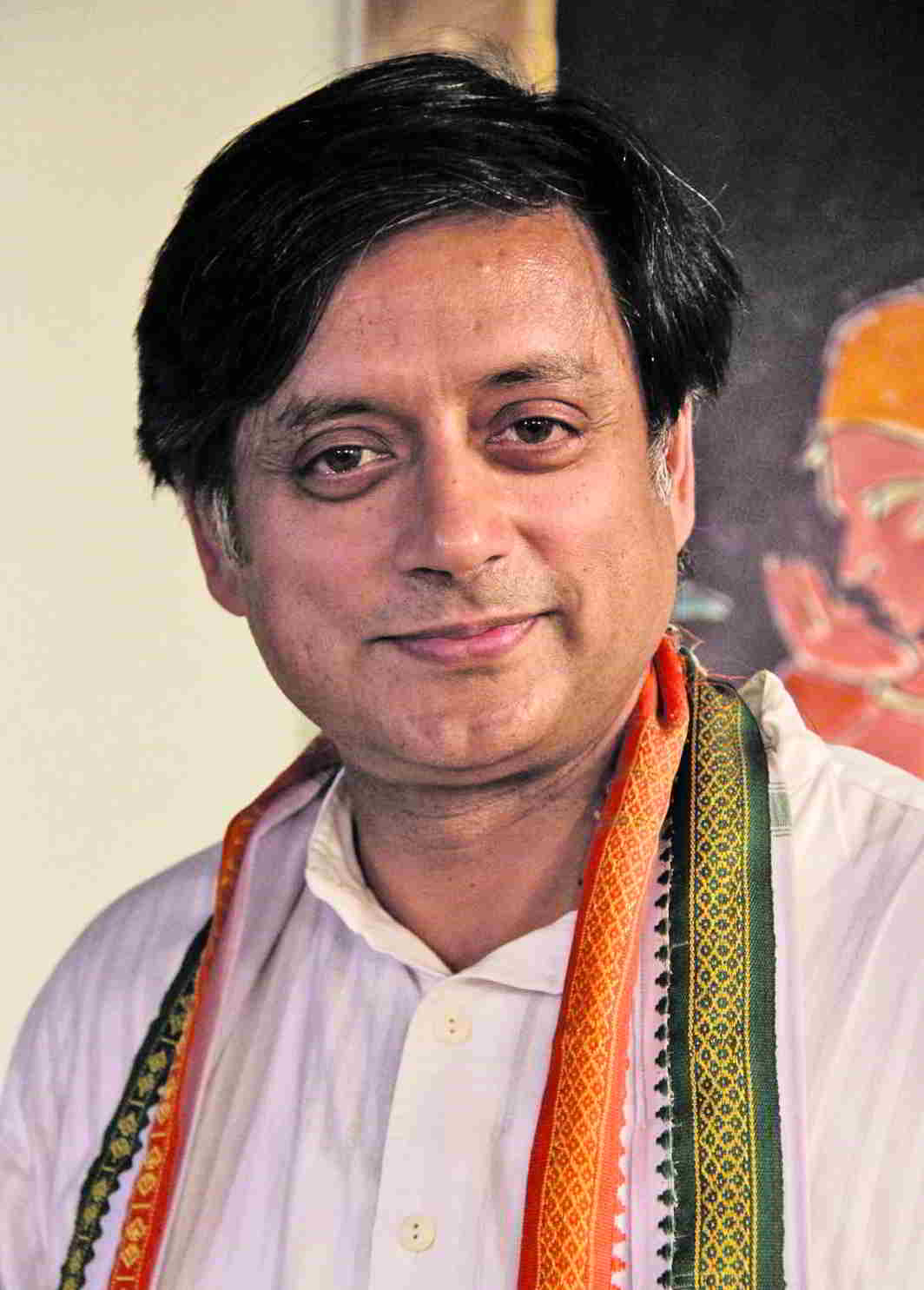

Renaming MGNREGA removes core spirit of rural employment law, says Shashi Tharoor
-
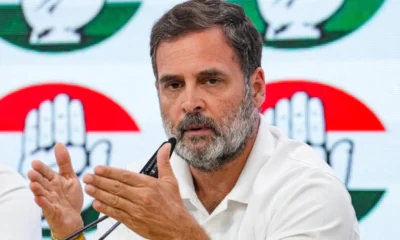

Rahul Gandhi attacks G RAM G bill, says move against villages and states
-
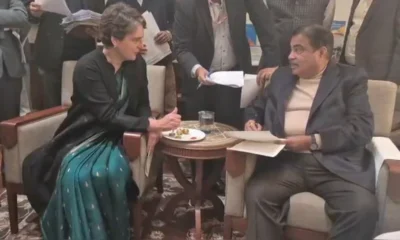

Priyanka Gandhi meets Nitin Gadkari over Kerala road projects, light moments mark discussion
-
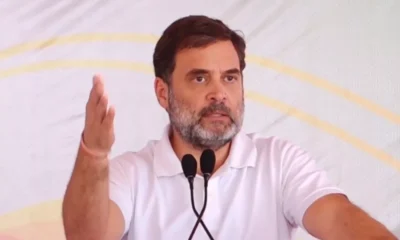

Rahul Gandhi Attacks Centre over G RAM G bill, calls it an attack on MGNREGA’s core principles
-
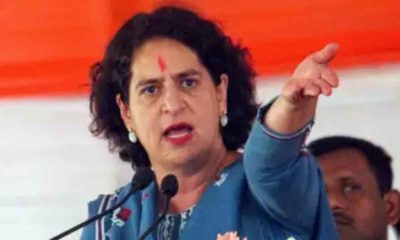

Priyanka Gandhi leads protest against G Ram G Bill, calls move to replace MGNREGA unconstitutional
-
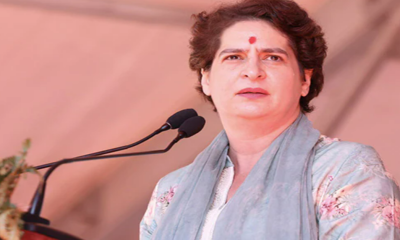

Priyanka Gandhi and Prashant Kishor held talks in Delhi after Bihar election setback
India News
Thick smog engulfs Delhi, flights and trains delayed as air quality slips to very poor
Delhi remained under a thick smog cover as air quality dipped into the very poor category, causing delays in flights and train services due to low visibility.
Published
2 days agoon
December 20, 2025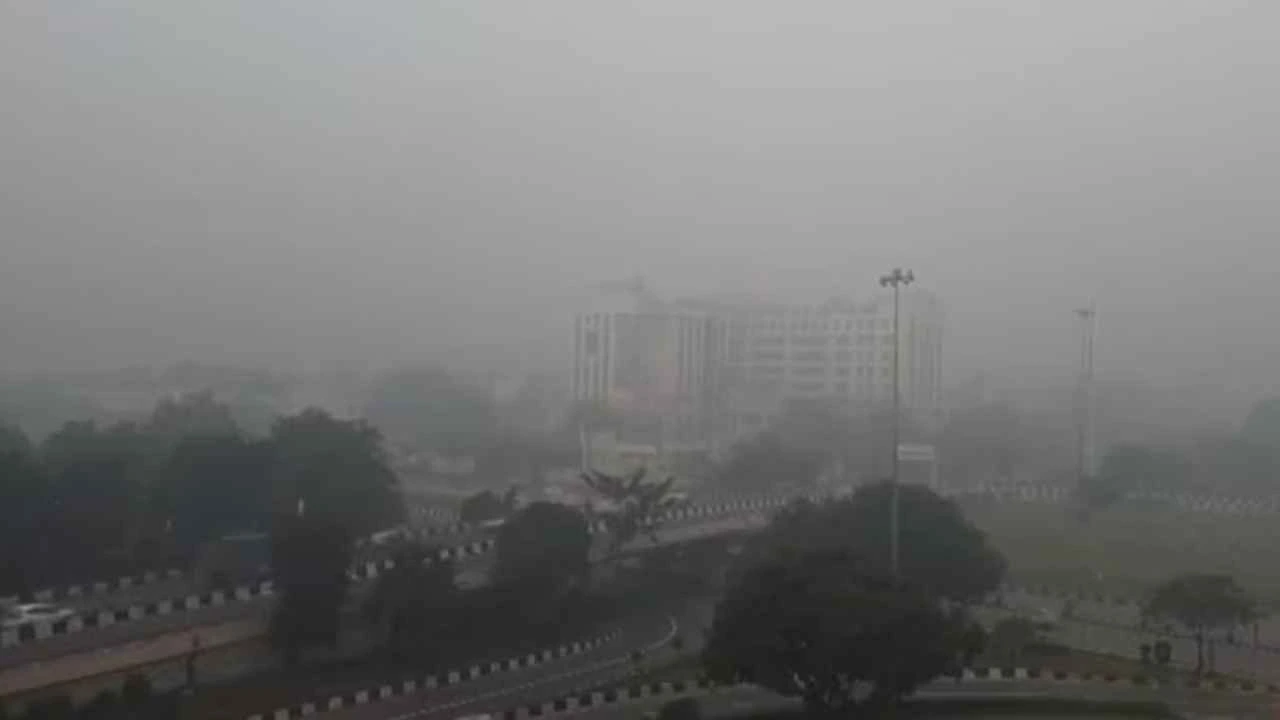
A dense blanket of smog covered Delhi on Saturday morning, pushing air quality into the ‘very poor’ category and disrupting flight and train operations across the national capital and adjoining areas. Reduced visibility due to smog led to delays in air and rail traffic, while authorities warned that pollution levels could worsen further in the coming days.
The Air Quality Index (AQI) in Delhi was recorded at 380, placing it in the ‘very poor’ bracket. Visuals from Bhairav Marg near Pragati Maidan showed motorists using headlights during early hours, as visibility remained low. At around 7 am, the AQI at this location stood at 433.
Nearly half of Delhi’s air quality monitoring stations reported ‘severe’ pollution levels. Anand Vihar recorded an AQI of 428 with PM2.5 as the dominant pollutant, while Jahangirpuri reported an AQI of 425.
Transport services hit by low visibility
Flight operations at Delhi airport were impacted due to low visibility conditions. The airport issued an advisory asking passengers to check with their respective airlines for updated flight information, as low visibility procedures were in place. Runway visibility was reported to be between 800 and 1,200 metres.
Live flight tracking data showed multiple flights running behind schedule. One airline also warned passengers about possible disruptions at several airports in northern and eastern India, including Delhi, due to dense fog conditions. Travellers were advised to verify flight status before heading to the airport, with options offered on select flights to reschedule or seek refunds without additional charges.
Rail services were also affected, with more than 30 trains running late by an average of three to four hours. Some long-distance trains reported delays of over six to eight hours, causing inconvenience to passengers travelling to and from the capital.
Air quality likely to worsen
The weather department had earlier forecast dense to very dense fog at isolated places over Delhi and several parts of north and central India. According to the Air Quality Early Warning System for Delhi, pollution levels are expected to remain in the ‘very poor’ category on Saturday and may slip into the ‘severe’ category on Sunday and Monday. In view of the deteriorating conditions, an ‘orange’ alert has been issued for Saturday.
India News
PM Modi inaugurates India’s first nature-themed airport terminal in Assam
Prime Minister Narendra Modi inaugurates the new nature-themed terminal at Guwahati airport, the largest in Northeast India, built around bamboo, orchids and regional heritage.
Published
2 days agoon
December 20, 2025
Prime Minister Narendra Modi is set to inaugurate the new terminal building of Lokapriya Gopinath Bordoloi International (LGBI) Airport in Guwahati today, marking a major milestone for aviation infrastructure in the Northeast. Built at an estimated cost of around Rs 4,000 crore, the facility is being projected as the largest airport terminal in the region and a key boost to connectivity, tourism and economic activity in Assam.
The Prime Minister is scheduled to arrive in Guwahati around 3 pm as part of his two-day visit to the state.
Northeast’s largest airport terminal takes shape in Guwahati
The newly constructed terminal is nearly seven times larger than the existing one and has been designed to cater to the region’s rapidly growing air traffic. Once fully operational, it is expected to handle up to 13.1 million passengers annually by 2032.
Officials said the terminal is planned as a regional connectivity hub, with a focus on strengthening air links between India and Southeast Asia. The airport will be capable of handling up to 34 air traffic movements per hour, the highest capacity among airports in the Northeast. The facility will also be equipped with one of the most advanced Instrument Landing Systems to support safer and more efficient operations.
Nature-inspired design rooted in Assam’s identity
What sets the Guwahati terminal apart is its distinctive nature-themed architecture. Conceptualised under the theme “Bamboo Orchids”, it is being described as India’s first airport terminal inspired entirely by natural and cultural elements.
The interiors draw from the landscapes of Northeast India, with design elements reflecting indigenous orchids, locally known as Kopou Phool, and the flow of the Brahmaputra river. The terminal incorporates more than 2,000 species of plants, includes a dedicated zone inspired by Kaziranga National Park, and features artefacts representing Majuli Island.
A key architectural highlight is the expansive bamboo vault, created using around 140 metric tonnes of locally sourced bamboo. The space has been envisioned as a multifunctional cultural centre aimed at encouraging community interaction and showcasing the region’s heritage. Design elements such as japi motifs, the iconic rhino symbol and 57 orchid-inspired columns further reinforce the cultural narrative.
Arriving passengers will also experience a unique “Sky Forest”, featuring nearly one lakh plants of indigenous species, designed to create an immersive forest-like ambience within the terminal.
Focus on digital integration and passenger convenience
Spread over nearly 1.4 lakh square metres, the integrated new terminal has been designed to handle around 1.3 crore passengers annually. It is supported by significant upgrades to the runway, airfield systems, aprons and taxiways.
The terminal places strong emphasis on digital integration, with 14 entry points, including four DigiYatra gates, aimed at easing passenger movement. Facilities such as full-body scanners for non-intrusive security checks, automated baggage handling systems, fast-track immigration and AI-driven airport operations have been incorporated to ensure smoother travel experiences.
Other engagements during PM Modi’s Assam visit
During his two-day stay, the Prime Minister will also lay foundation stones for multiple development projects and address public gatherings. He is scheduled to visit the Swahid Smarak Kshetra to pay tribute to the martyrs of the historic Assam Movement.
Later in the day, PM Modi will perform the bhoomipujan for a new brownfield Ammonia-Urea Fertiliser Project at Namrup in Dibrugarh district, within the existing premises of the Brahmaputra Valley Fertiliser Corporation Limited.
India News
Assam train accident: Eight elephants killed after Rajdhani Express derailment in Hojai
Eight elephants were killed after the Rajdhani Express collided with a herd in Assam’s Hojai district, causing multiple coaches to derail and disrupting train services.
Published
2 days agoon
December 20, 2025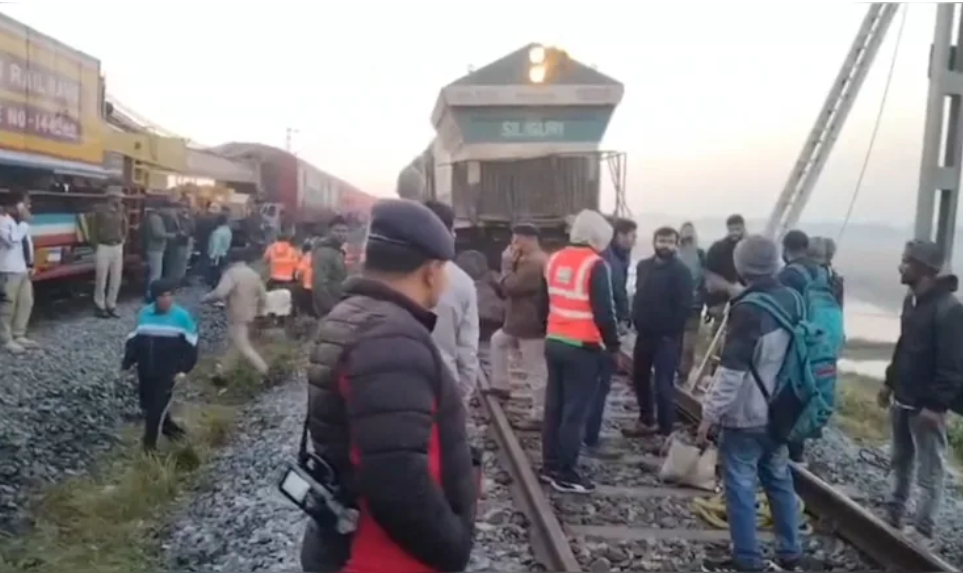
At least eight elephants were killed and a calf was injured after a herd collided with the Sairang–New Delhi Rajdhani Express in Assam’s Hojai district, leading to the derailment of the locomotive and five coaches early Saturday. Railway officials confirmed that no passengers were injured in the incident.
Forest department officials said the collision occurred when the New Delhi-bound Rajdhani Express struck a herd of elephants on the tracks. The impact caused multiple coaches to derail, disrupting rail traffic on the busy route connecting the Northeast with the national capital.
Train services hit, passengers shifted to other coaches
Following the derailment, rail movement towards Upper Assam and other parts of the Northeast was affected due to damaged coaches and elephant remains scattered on the tracks. Accident relief trains and senior railway officials rushed to the site to restore services.
Passengers travelling in the affected coaches were temporarily accommodated in vacant berths in other coaches of the same train. Officials said that once the train reaches Guwahati, additional coaches will be attached to ensure all passengers can continue their journey.
Collision occurred outside designated elephant corridor
According to officials, the accident took place at a location that is not marked as a designated elephant corridor. The loco pilot reportedly applied emergency brakes after spotting the herd on the tracks, but the elephants ran into the train, resulting in the collision and derailment.
Forest authorities confirmed that eight elephants died on the spot, while one injured calf was rescued. Local residents said the herd consisted of around eight elephants at the time of the accident.
Elephant deaths in train accidents remain a concern
The incident comes amid continued concerns over wildlife deaths on railway tracks. Data shared by the Environment Ministry in Parliament earlier showed that at least 79 elephants have died in train collisions across India over the past five years, based on reports from states and Union Territories.
The ministry has said that several preventive steps are being taken in coordination with the Railways, including speed restrictions in elephant habitats, use of sensor-based detection systems, and construction of underpasses, ramps and fencing at vulnerable locations. Guidelines and capacity-building programmes have also been introduced to reduce human-animal conflict along railway lines.

India announces T20 World Cup 2026 squad, Shubman Gill dropped as Axar Patel named vice-captain

Veteran Malayalam actor and filmmaker Sreenivasan passes away at 69

T20 World Cup 2026: Selectors weigh Shubman Gill role as India squad announcement awaited

Thick smog engulfs Delhi, flights and trains delayed as air quality slips to very poor



